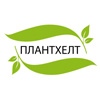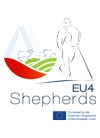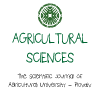Aromatic, medicine and spice plants
|
Course title: |
Aromatic, medicine, and spice plants |
|
|
Course code: |
AFAMS |
|
|
ECTS: |
5 |
|
|
In-class hours |
Lectures: |
30 |
|
Laboratory work/Tutorials: |
30 |
|
|
Self-preparation hours |
Practical training: |
15 |
|
Other: |
50 |
|
|
Total hours: |
125 |
|
|
Language: |
English |
|
|
Study cycle: |
BSc, MSc, PhD |
|
|
Semester: |
Winter & summer |
|
|
Faculty: |
Faculty of Agronomy |
|
|
Name of the lecturer(s): |
Prof. Nurettin Tahsin, PhD |
|
|
Mode of delivery: |
Face-to-face, distance learning, a combination of both |
|
|
Prerequisites: |
Botany, Chemistry, Plant physiology, Biochemistry, Soil science and agrochemistry, Mechanization and agricultural machinery, Phytopathology, Entomology Co-requisites: Mathematics, Economy |
|
|
Learning outcomes of the course unit: |
The course “Aromatic, medical, and spice plants” provides biology, systematics, and varieties introduction. There are presented the technology elements of major Aromatic, medical, and spice plants cultivation, grown under Central and Southern Europe conditions. The course includes lectures, laboratory work, and practices. Learning outcomes: • Morphology of the Aromatic, medical, and spice plants • Systematic and varieties. • Phenology growth depending on environmental factors. • Main technology elements (predecessors, soil tillage, fertilization, sowing, growing during the vegetation, harvesting). |
|
|
Course contents: |
Lectures - 30 h; 1. Biological active substances- 2 hours. 2. Rose, rosehip- origin, distribution, importance. Productivity potential. Phenology and biological characteristics. Agrotechnology (predecessors, soil tillage, fertilization, sowing, growing during the vegetation period, harvesting). – 2 hours. 3. Lavander- origin, distribution, importance. Productivity potential. Phenology and biological characteristics. Agrotechnology (predecessors, soil tillage, fertilization, sowing, growing during the vegetation period, harvesting). – 2 hours. 4. Mint- origin, distribution, importance. Productivity potential. Phenology and biological characteristics. Agrotechnology (predecessors, soil tillage, fertilization, sowing, growing during the vegetation period, harvesting). – 2 hours. 5. Salvia- origin, distribution, importance. Productivity potential. Phenology and biological characteristics. Agrotechnology (predecessors, soil tillage, fertilization, sowing, growing during the vegetation period, harvesting). – 2 hours. 6. Sage tea- origin, distribution, importance. Productivity potential. Phenology and biological characteristics. Agrotechnology (predecessors, soil tillage, fertilization, sowing, growing during the vegetation period, harvesting). – 2 hours. 7. Basil- origin, distribution, importance. Productivity potential. Phenology and biological characteristics. Agrotechnology (predecessors, soil tillage, fertilization, sowing, growing during the vegetation period, harvesting). – 2 hours. 8. Melissa- origin, distribution, importance. Productivity potential. Phenology and biological characteristics. Agrotechnology (predecessors, soil tillage, fertilization, sowing, growing during the vegetation period, harvesting). – 2 hours. 9. Fennel- origin, distribution, importance. Productivity potential. Phenology and biological characteristics. Agrotechnology (predecessors, soil tillage, fertilization, sowing, growing during the vegetation period, harvesting). – 2 hours. 10. Anise- origin, distribution, importance. Productivity potential. Phenology and biological characteristics. Agrotechnology (predecessors, soil tillage, fertilization, sowing, growing during the vegetation period, harvesting). – 2 hours. 11. Milk Thistle- origin, distribution, importance. Productivity potential. Phenology and biological characteristics. Agrotechnology (predecessors, soil tillage, fertilization, sowing, growing during the vegetation period, harvesting). – 2 hours. 12. Valeriana- origin, distribution, importance. Productivity potential. Phenology and biological characteristics. Agrotechnology (predecessors, soil tillage, fertilization, sowing, growing during the vegetation period, harvesting). – 2 hours. 13. Medical camomile- origin, distribution, importance. Productivity potential. Phenology and biological characteristics. Agrotechnology (predecessors, soil tillage, fertilization, sowing, growing during the vegetation period, harvesting). – 2 hours. 14. Summer snowflake- origin, distribution, importance. Productivity potential. Phenology and biological characteristics. Agrotechnology (predecessors, soil tillage, fertilization, sowing, growing during the vegetation period, harvesting). – 2 hours. 15. Hops- origin, distribution, importance. Productivity potential. Phenology and biological characteristics. Agrotechnology (predecessors, soil tillage, fertilization, sowing, growing during the vegetation period, harvesting). – 2 hours.
Laboratory work - 30 h; 1. Biological active substances - 2 hours. 2. Rose, rosehip- morphology specifics, systematic and varieties - 2 hours. 3. Lavander- morphology specifics, systematic and varieties - 2 hours. 4. Mint- morphology specifics, systematic and varieties - 2 hours. 5. Salvia- morphology specifics, systematic and varieties - 2 hours. 6. Sage tea- morphology specifics, systematic and varieties - 2 hours. 7. Basil- morphology specifics, systematic and varieties - 2 hours. 8. Melissa- morphology specifics, systematic and varieties - 2 hours. 9. Fennel- morphology specifics, systematic and varieties - 2 hours. 10. Anise- morphology specifics, systematic and varieties - 2 hours. 11. Milk Thistle- morphology specifics, systematic and varieties - 2 hours. 12. Valeriana- morphology specifics, systematic and varieties - 2 hours. 13. Medical camomile- morphology specifics, systematic and varieties - 2 hours. 14. Summer snowflake- morphology specifics, systematic and varieties - 2 hours. 15. Hops- morphology specifics, systematic and varieties - 2 hours. |
|
|
Recommended or required reading: |
1. Yankov B.,Terziev G., R. Ivanova, T. Georgieva, I. Yanchev, T. Kolev, N. Tahsin. 2003. Manual for Crop (medicinal, aromatic plants and taste), Acad ed. Agricultural University of Plovdiv. 2. Ivanova R., Yancheva H., T. Georgieva, I. Yanchev, T. Kolev, N. Tahsin and etc. 2019. Academic Publishing of the Agricultural University of Plovdiv. 3. Yanchev I. & N. Tahsin. 2000. "Opportunities for growing wheat monoculture by including basil in a second culture." Collection of Scientific Works of the Union of Scientists - Plovdiv. National Scientific Session of Young Scientists "Life sciences in the new millennium." pt, p 301-305. 4. http://faostat.fao.org/site/56... . |
|
|
Planned learning activities and teaching methods: |
Lectures, presentations, briefing, tutorials) Dialogue methods (conversation, discussion, brainstorming) |
|
|
Assessment methods and criteria: |
The lectures, laboratory work, and practical training will be held in the 4 laboratories, experimental field, and the demonstration field at the Crop Science Department at the Agricultural University of Plovdiv, Bulgaria and aromatic oil distilleries in the Plovdiv region. The students are working individually under the lecturer's supervision. The final grade consist: • Theory exam. (test and discussion). (Origin, distribution, importance. Phenology and biological characteristics. Agrotechnology) – 60% . • Practical exam (discussion). (Determination of the species and varieties by their morphological specifics) – 20%. • Presentation of an individual project about Aromatic, medical and spice plants and technology. – 20%. |
|
 - Събития по случай 80-я юбилей на АУ
- Събития по случай 80-я юбилей на АУ











